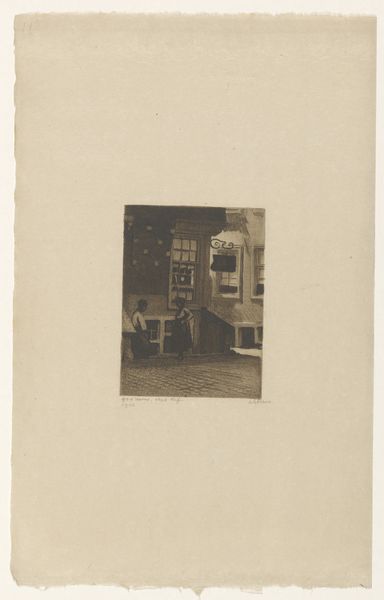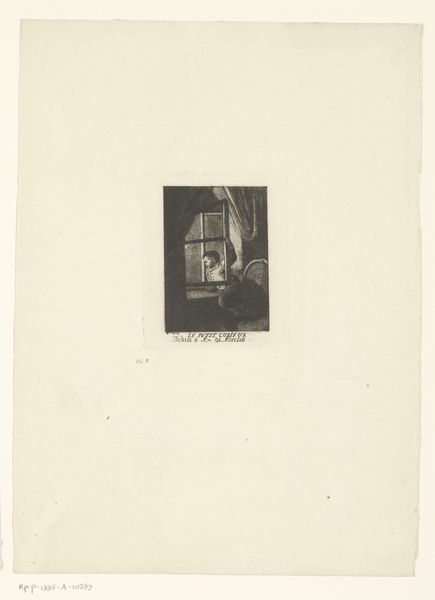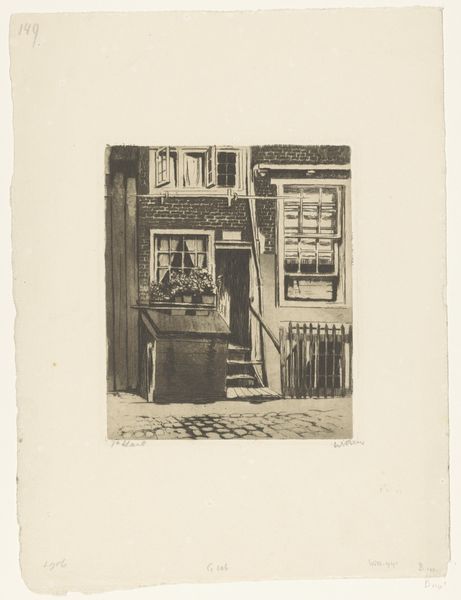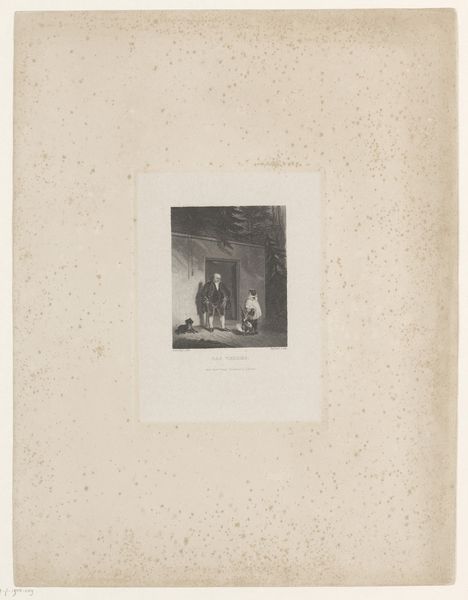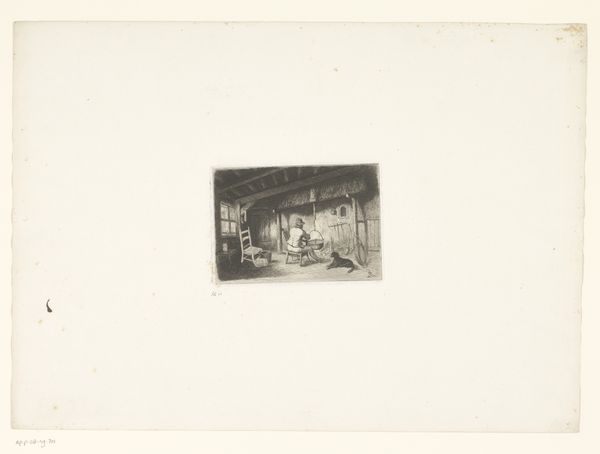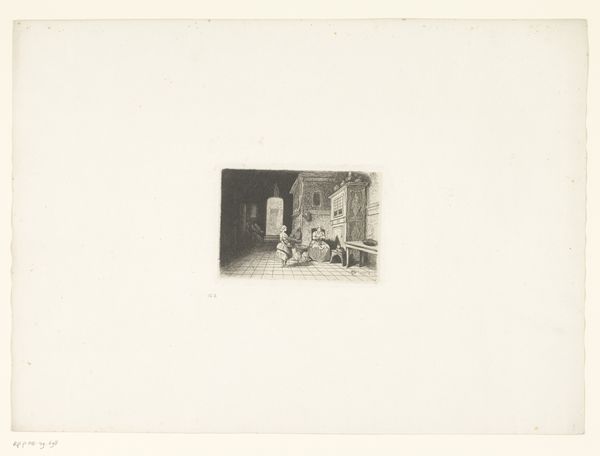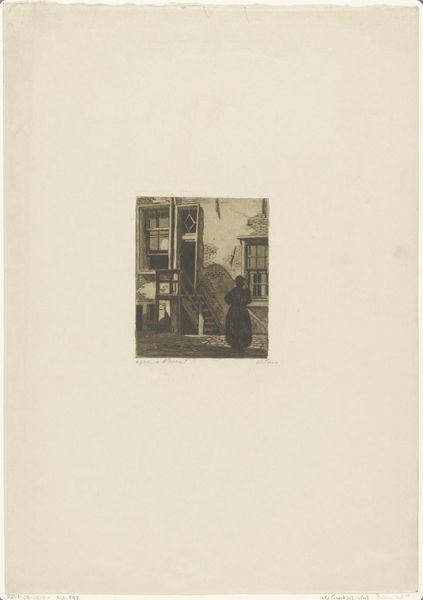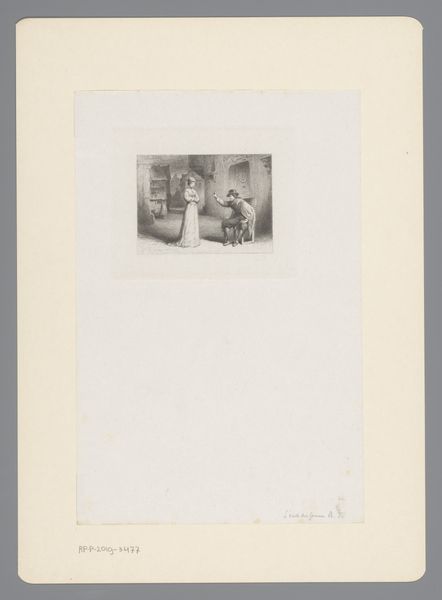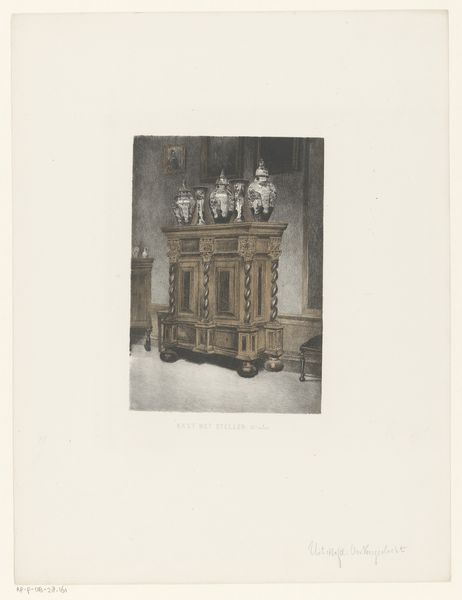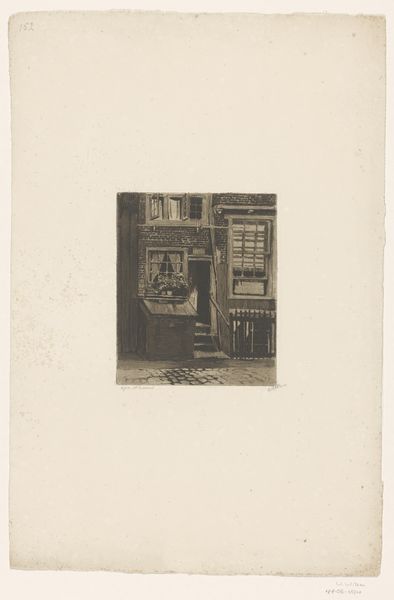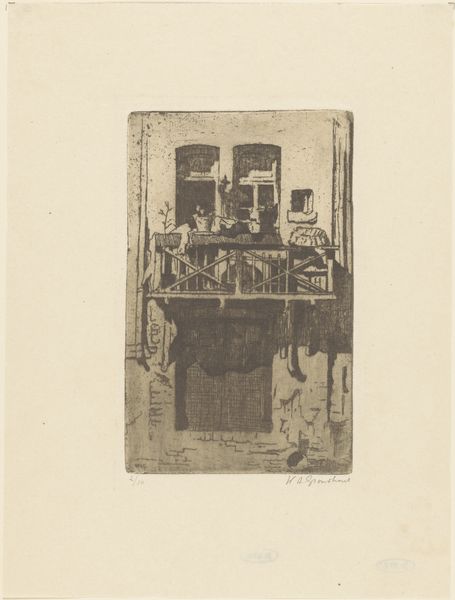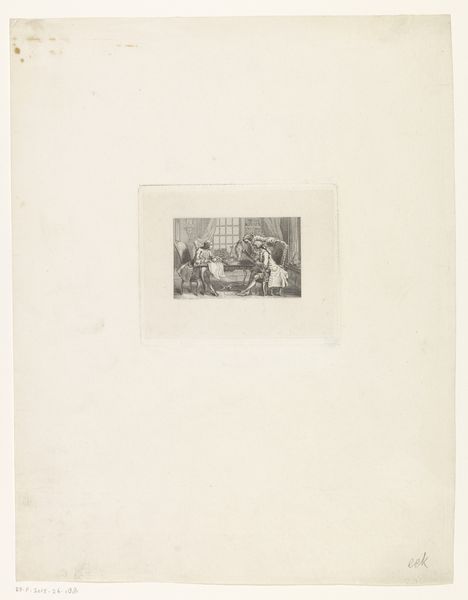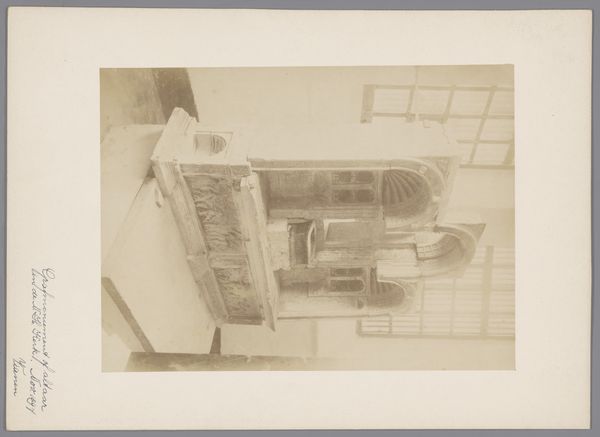
Dimensions: height 160 mm, width 120 mm
Copyright: Rijks Museum: Open Domain
Curator: Looking at this print, I'm immediately struck by its quiet mood. The blacks are so deep and inky; it almost feels like looking at a memory. Editor: Indeed, there is a strong sense of quiet introspection here. What we are viewing is an etching by Willem Witsen, titled "Twee vrouwen in de Krom Boomsloot in Amsterdam," or "Two Women in the Krom Boomsloot in Amsterdam" created around 1905-1906. The Krom Boomsloot was, and remains, one of the oldest canals in Amsterdam's city center. Curator: The artist uses this narrow, confined streetscape to create an impression that I find both compelling and unnerving. Those two dark figures of the women are central, and they are, in a way, engulfed by architecture, like the weight of history is pressing down. Editor: Yes, Witsen's compositions often emphasize the relationship between the human figure and the urban environment. He's not just presenting a picturesque view; he is delving into the experience of modern life within a rapidly changing city. Remember, in this era, Amsterdam was undergoing massive transformations, so his works provide some insight on the politics of imagery during this period. Curator: The use of black and white seems incredibly deliberate here. It's more than just a limitation of the medium. The darkness highlights feelings of uncertainty during industrial and economic growth, making those buildings into looming presences in the daily lives of the individuals. And yet the women have this enduring human element. Editor: Etchings such as this one gave people greater access to art. Prints democratized imagery and placed them in cafes, civic centers, and eventually in public museums for mass engagement. It changed social interactions within city communities and even created new roles for women. Curator: Seeing how deeply Witsen integrated human experience with the cityscape really encourages reflection. The symbolism, the subtle tensions—it really opens up a cultural landscape. Editor: Yes, the image's historical roots enhance its emotional relevance for modern viewers; it shows the enduring impact of imagery in all our lives.
Comments
No comments
Be the first to comment and join the conversation on the ultimate creative platform.
